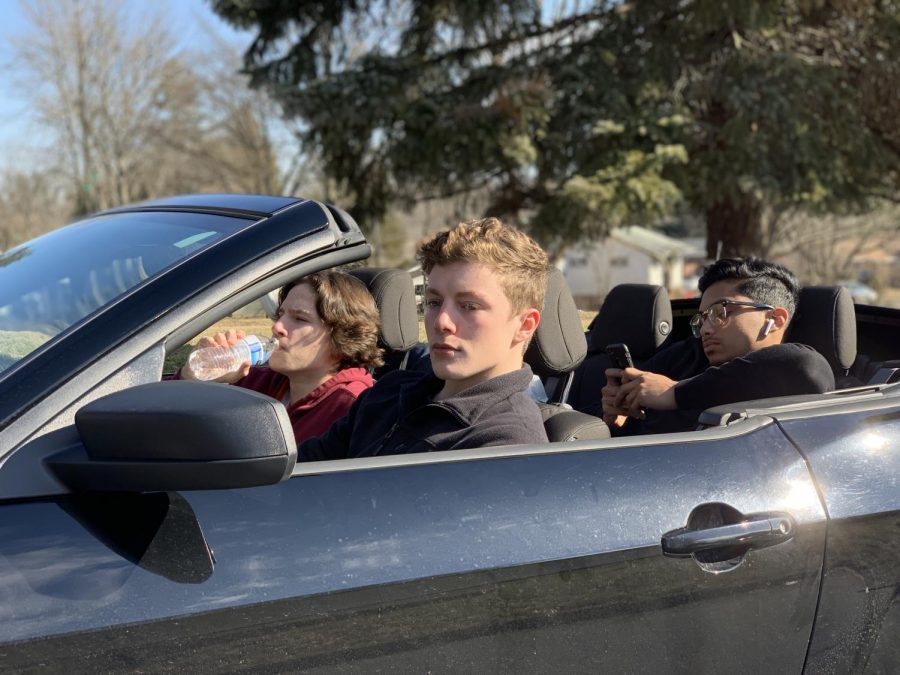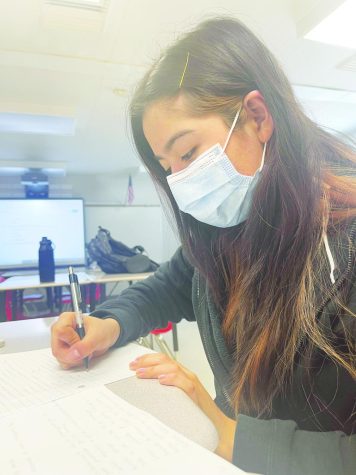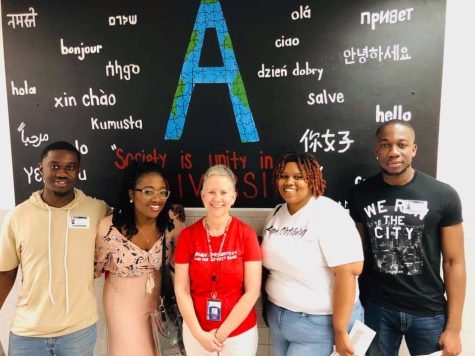Keys, please!
Teenagers revel in first-time freedom
Senior James Gore commutes to school and back by driving. He is among the many teen drivers who have a school parking permit and at times, rides with friends.
It is one of the biggest moments for teenagers growing up and a major key in the transition from adolescence to adulthood, learning how to drive.
Despite the percentage of high school seniors with a driver’s license declining in recent years, getting a license is still a very exciting achievement for many.
For senior James Gore, as he inserts the key into the ignition slot of his 2013 Mustang convertible, he thinks about freedoms that were previously unthinkable before he earned his license and then his own car.
“Before I had my car, I had to mostly rely on either one of my parents to pick me up and drop me off,” Gore said. “Now that I have my own car, I am able to get myself from point A to point B without having to depend on anybody else.”
For teens such as Gore, being able to drive to school comes with many benefits. Many students often stay after school for extended periods of time for various extracurricular activities such as clubs and sports.
“I stay after school really late into the day sometimes since I play lacrosse,” Gore said. “I also have to make-up and retake tests and quizzes after school on some days so having a car is just really convenient.”
Driving to school provides advantages for students who take academy classes as well. Students enrolled in academy courses often have to transit from AHS to different schools that provide their course of choice.
Senior Samir Hossain is enrolled in Social Media Marketing, a class not available at AHS, thus resulting in him having to attend the course at Fairfax High School. Students who take academy courses leave school during the period in which their class is taking place. These students have the option of taking a school bus to their class or driving themselves.
“Being enrolled in an academy class junior and senior year, I can say that the transportation was a hassle last year,” Hossain said. “I had to take the bus most of the time which caused for me to be a little late to class or too early sometimes.”
Having the availability of a car at school allows students enrolled in academy courses to drive themselves to and from class.
“Now having a car my senior year, I drive myself to Fairfax for my social media class,” Hossain. “It just eases the process because I don’t have to wait on the bus anymore and I actually end up having some free time in between academy and getting back to school.”
When it comes to driving to school, most students park their vehicles at Ossian Hall Park. Parking passes for the school year generally cost $200 and are reduced progressively at the end of each quarter. Students are able to purchase passes year round from the main office.
However, students who do not purchase a parking pass and park their cars on school grounds anyway face having to pay parking tickets. Earlier in the school year, many students believed that this rule was unfair as they thought the prices were unreasonable.
“I think that the prices for the parking passes are ridiculous,” senior Hlina Wondwossen said. “There is absolutely no reason to charge high school students $200 to park in a spot which is minutes away from the school. It frustrates me that they want us to pay to come to school.”
However, prices are not determined by AHS, but rather by Fairfax County. Outside of Ossian Hall Park, there are parking areas around the school that are considered public and available for students.
“There is parking in the neighborhood, such as the church, that students can legally park at,” School Resource Officer Adam Curcio said. “There are a couple of zones in the area that are public or free parking where students can park if it works out with their schedule.”
More often than not, the process of learning how to drive begins in Driver’s Ed class. At AHS, Driver’s Education is administered as a quarter-long course where students are taught both road safety and rules as well as driving skills.
Students are also provided with an official DMV handbook in preparation for the learner’s permit exam.
“The most beneficial part of Driver’s Ed is getting the driver’s manual so that I can study at home,” sophomore Haleluya Worku said. “I don’t think the class is that beneficial in the process of getting my permit because I can just study the manual on my own.”
Upon earning their permit, students are eligible for the Behind-the-Wheel course which upon completion, awards them their driver’s license. However, there is always precautions that should be taken with teens getting behind the wheel.
Especially in recent years, despite a drop in the rate of high school students with a driver’s license, accidents involving teenage drivers have been on the rise.
According to the CDC, in 2016, 2,433 teens in the United States ages 16–19 were killed and 292,742 were treated in emergency departments for injuries suffered in motor vehicle crashes. That means that six teens ages 16–19 died every day due to motor vehicle crashes and hundreds more were injured.
Teen accidents are usually the product of drivers being distracted and preoccupied while behind the wheel. Contributing factors include texting and driving, music or other individuals in the vehicle.
“The biggest problem I recognized when I worked the street and encountered a lot of traffic problems is distracted driving,” Curcio said. “It was either speeding, distracted driving by phone or friends, or drunk driving which was pretty rare.
With this being said, teens should ease themselves into learning how to drive and abide by laws such as the limit on passengers allowed in their vehicle.
“My advice is for teens to be familiar with their vehicle and learn how to drive their car while also limiting distractions,” Curcio said.

Senior Jude Nanaw is the current Co-Editor in Chief of The A-Blast. He has been on staff for four years where in previous years he has held the positions...












